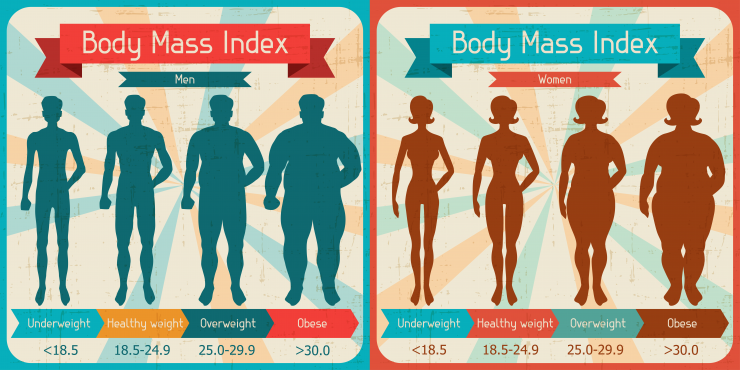What is BMI?
BMI is used as a screening tool to indicate whether a person is underweight, overweight, obese or a healthy weight for their height.
If a person’s BMI is out of the healthy BMI range, their health risks may increase significantly.3
BMI values are age-independent and the same for both sexes. However, BMI may not correspond to the same degree of fatness in different populations due to different body proportions.

The health risks associated with an increasing BMI are continuous, and the interpretation of BMI grading in relation to risk may differ for different populations.6
There are two ways to check your BMI:
- Use our BMI calculators
Benefits of maintaining a healthy weight
The benefits of maintaining a healthy weight include:

- Fewer joint and muscle pains
- Increased energy and ability to join in more activities
- Improved regulation of bodily fluids and blood pressure
- Reduced burden on the heart and circulatory system
- Improved sleep patterns
- Reductions in blood triglycerides, blood glucose, and risk of developing type 2 diabetes
- Reduced risk for heart disease and certain cancers.
Excess weight increases how hard the heart has to work, it also raises blood pressure, blood cholesterol and triglyceride levels and lowers HDL (good) cholesterol levels. Excess weight can make a person more likely to develop diabetes.
Lifestyle changes that help you maintain a 3-5% weight loss are likely to result in clinically meaningful improvements in blood glucose, triglycerides and risk of developing type 2 diabetes. Greater weight loss can also help reduce blood pressure and improve blood cholesterol.4
How is BMI used?
BMI is not accurate enough to be used as a diagnostic tool. However, it is used as a screening tool to identify potential weight problems in adults.
A person may have a high BMI, yet to determine if this excess weight is a health risk, a health care provider would need to complete further assessments such as:2
- Skin-fold thickness measurements
- Evaluations of diet
- Physical activity
- Family history
- Other appropriate health screenings.
